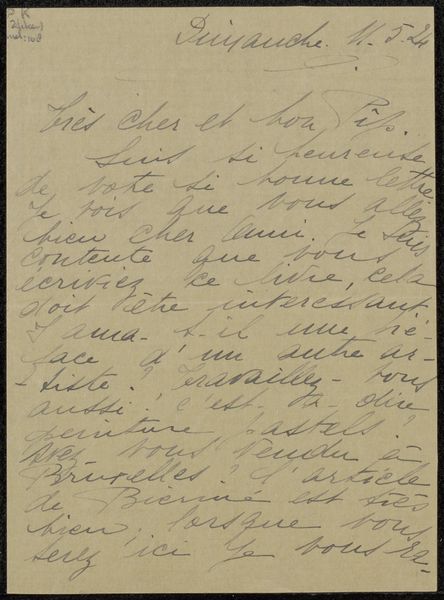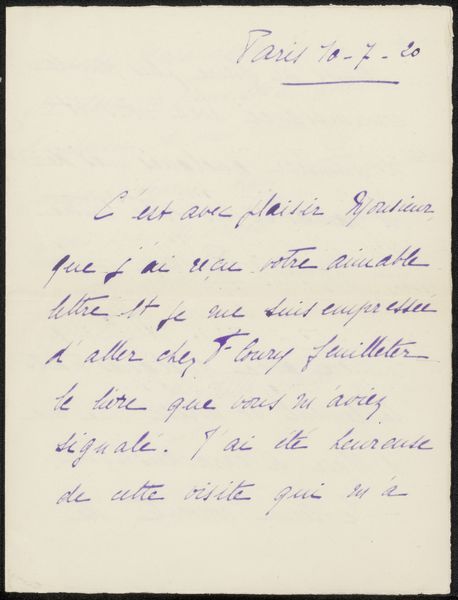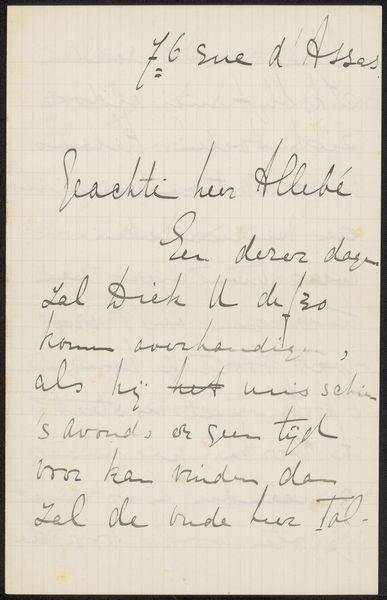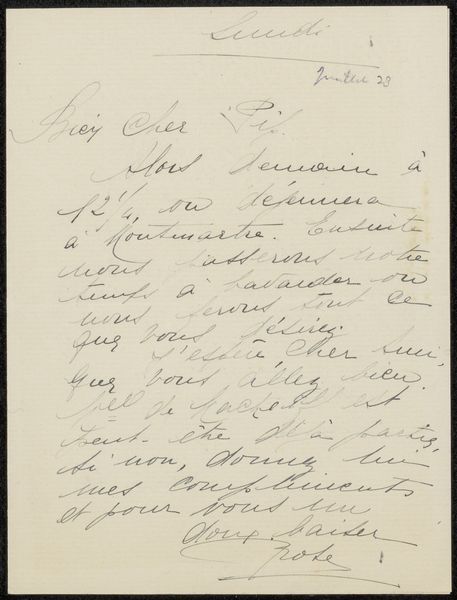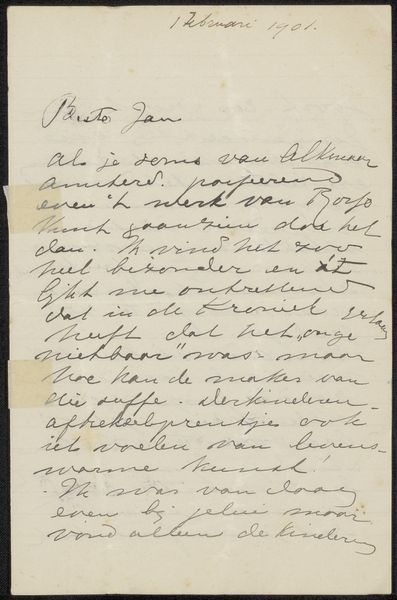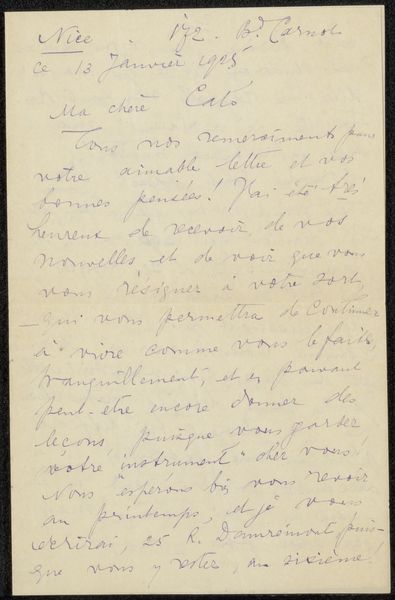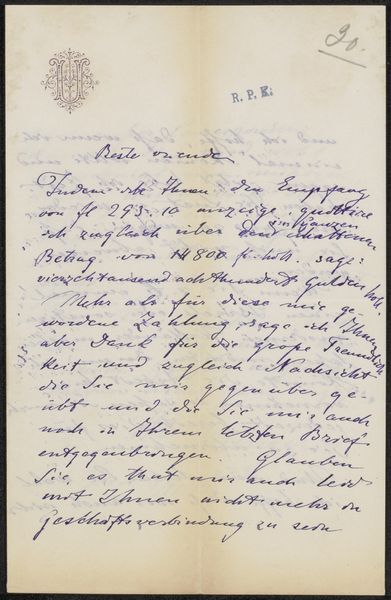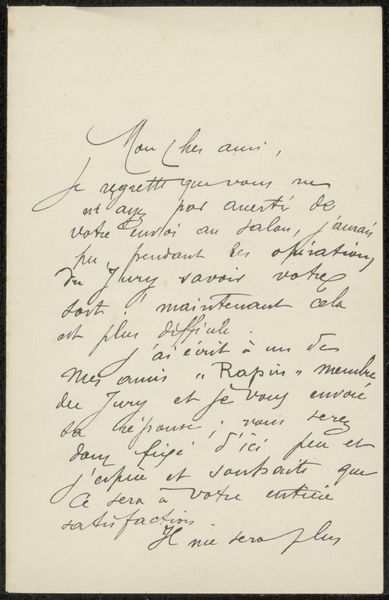
drawing, paper, ink, pen, frottage
#
drawing
#
pen sketch
#
paper
#
ink
#
pen work
#
pen
#
modernism
#
frottage
#
calligraphy
Copyright: Rijks Museum: Open Domain
Curator: We're looking at "Brief aan August Allebé," or "Letter to August Allebé," a drawing potentially made between 1905 and 1923 by Annie Ermeling, rendered in ink on paper. Editor: It's just handwriting on a grid paper background, so immediate. Yet there's a formality, almost like seeing into the past through the handwriting itself. Curator: Absolutely. The materiality speaks volumes. The choice of paper—likely inexpensive grid paper –suggests a certain urgency or perhaps the casual nature of a personal correspondence. The ink, the pressure applied to the pen, the very act of writing as labor and communication, tells a story of immediacy. Editor: The handwriting feels like a cultural artifact, too, it evokes a specific era. It almost serves as a visual signifier—that elegant cursive evokes tradition and it points to a vanishing form of communication, the handwritten letter. Curator: Consider the social context of letter writing at the turn of the century. Before telephones became widespread, this was the primary means of long-distance connection, but Ermeling is potentially addressing her colleague. It is that sense of place and social need driving production. Editor: Also, it brings up a specific emotional realm connected to written correspondence. Each flourish feels weighted. And what does the content suggest? The fact of a card being expected? Are we looking at regret or simply expectation, it is rich. Curator: The text refers to receiving or expecting a card. Now, think of paper production at this time and what mass communication truly meant. Who consumes, who produces? And from what station in life does the artist emerge? Editor: Ultimately, the script's flowing nature invites our curiosity to ponder unseen narratives, of past intimacies or long relationships formed on a simple paper base. The writing in and of itself holds mystery. Curator: For me, it emphasizes labor through readily available materials, it emphasizes the material act, while, it communicates history to the modern world. The intersection truly is striking. Editor: Yes, now I wonder about August Allebé, I imagine this man now when viewing Ermeling’s letter, he is alive in text.
Comments
No comments
Be the first to comment and join the conversation on the ultimate creative platform.
